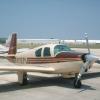Times have changed in aviation maintenance
-
Members Online
- Mooneydreamr
- Jay Bird
- LANCECASPER
- C.J.
- OSUAV8TER
- CCAS
- Eric Burris
- TGreen
- Guy123
- Grant_Waite
- MikeOH
- Marc_B
- Hank
- eman1200
- amillet
- N201MKTurbo
- ragedracer1977
- Utah20Gflyer
- spistora
- Fix
- cbarry
- Fly Boomer
- 1980Mooney
- Ivan
- KLRDMD
- DMM
- UteM20F
- Scottknoll
- RangerM20
- Andy95W
- EricJ
- Brian2034
- Electro
- 47U
- ElkoRandy20J


Recommended Posts
Join the conversation
You can post now and register later. If you have an account, sign in now to post with your account.